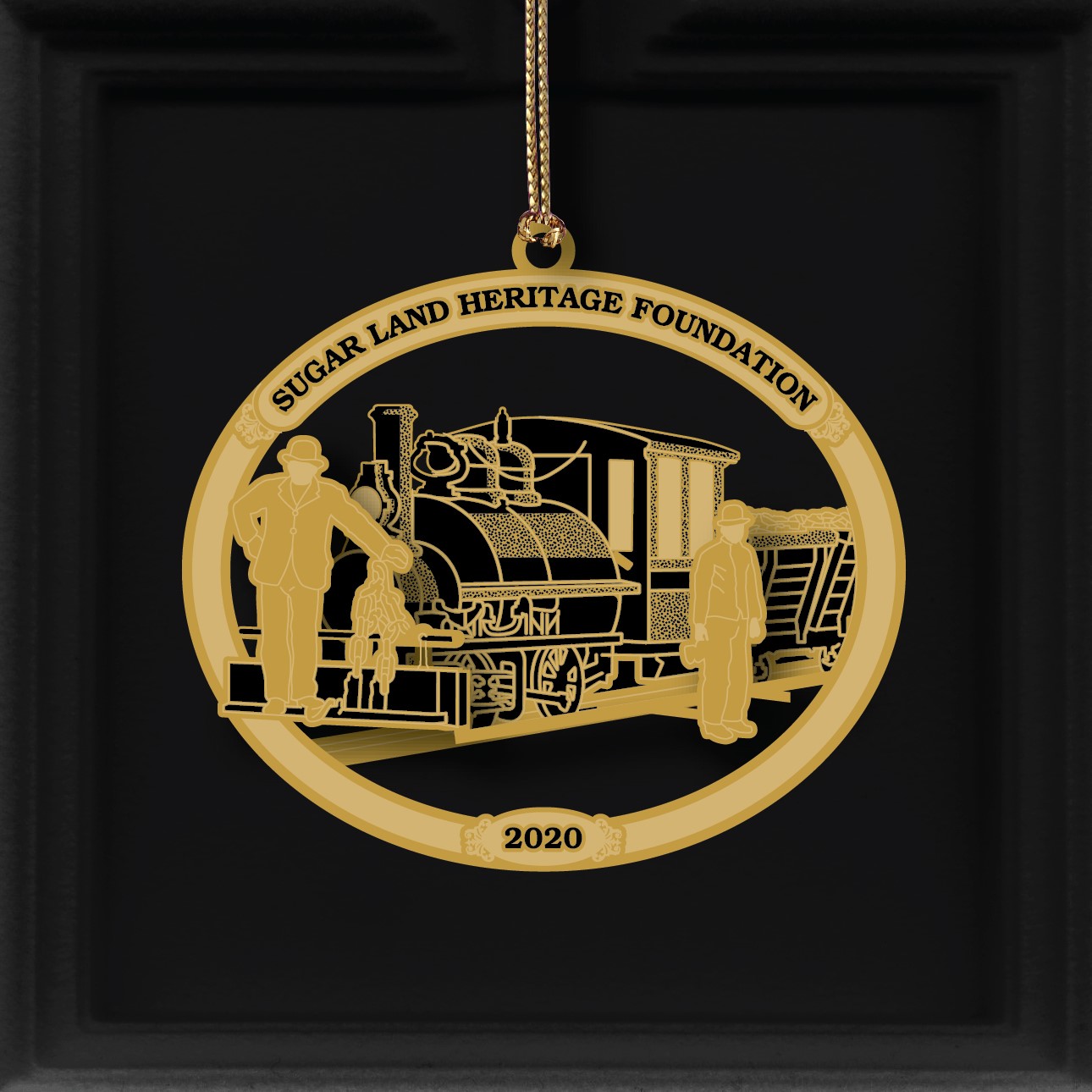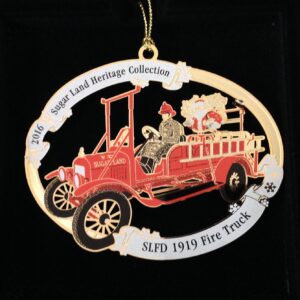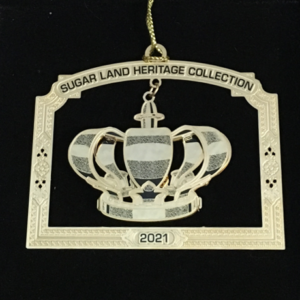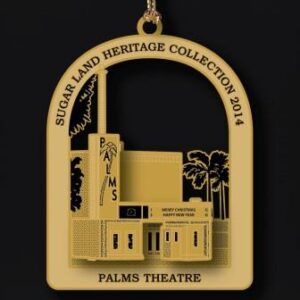Description
2020 Sugar Land Heritage Collection Ornament
Locomotives no longer cross the fields or rush over trestles above Oyster Creek in Sugar Land. Still, in the late 1800s to early 1900s, it was common to see trains pulling rail cars loaded with sugar cane through the fields. These narrow-gauge locomotives played an important role in the day-to-day function of the mill and refinery. Initially, the rail cars were pulled by mules or horses. A horse towing a car on a rail track could haul 15 to 20 times more cane per day than a single mule wagon operating in the fields.
In 1882, Colonel E. H. Cunningham purchased Oakland Plantation with its then run-down mill, and added neighboring land, eventually accumulating 12,000 acres. Cunningham, partnering with Colonel Littleberry Ellis who added 5,300 additional acres, invested over $1 million in new buildings and machinery. He built over 14 miles of narrow-gauge railroads to bring the sugar cane from the fields to the brand-new refinery he constructed adjacent to the raw sugar mill. Moveable rail lines had iron or wood rails that could be shifted from field to field as the cane was ready for harvest. Narrow gauge locomotives increased production even more and were more successful carrying cane long distances and soon replaced the mule carts.
The narrow-gauge trains were used until 1928. Due to insects, crop diseases, and the constant threat of storms and floods, it became more economical to import raw sugar from Cuba and other Caribbean countries.



